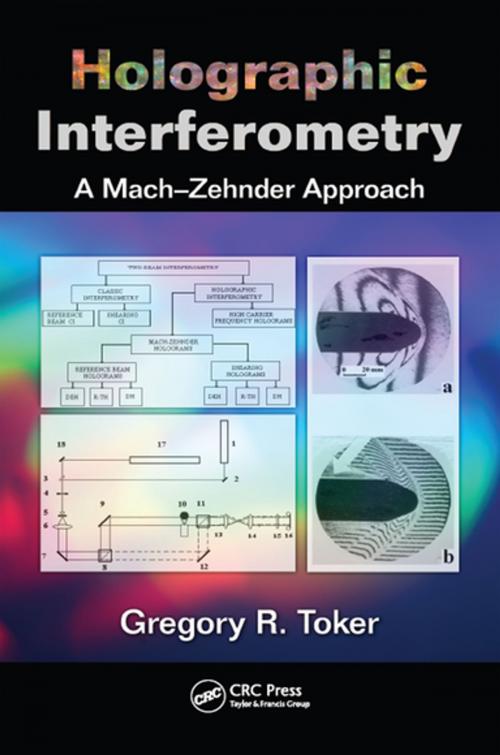Holographic Interferometry
A Mach–Zehnder Approach
Nonfiction, Science & Nature, Technology, Lasers, Electricity, Engineering, Mechanical| Author: | Gregory R. Toker | ISBN: | 9781351832670 |
| Publisher: | CRC Press | Publication: | December 19, 2017 |
| Imprint: | CRC Press | Language: | English |
| Author: | Gregory R. Toker |
| ISBN: | 9781351832670 |
| Publisher: | CRC Press |
| Publication: | December 19, 2017 |
| Imprint: | CRC Press |
| Language: | English |
Transparent in the visible range, phase objects can be studied in the optical range using holographic interferometry. Typically, the holograms are recorded on high-resolving-power holographic photo materials, but a lower spatial resolution is sufficient for successful research in many scientific applications. Holographic Interferometry: A Mach–Zehnder Approach offers practical guidance to research scientists and engineers using Mach–Zehnder holographic interferometry methods to study phase objects in the laboratory. The Mach–Zehnder approach allows the use of standard photographic film and electronic CCD/CMOS sensors with low resolving power, making it a simpler and more affordable option for testing many types of phase objects.
This book demonstrates how to use standard photographic film for the optical recording and reconstruction of Mach–Zehnder holograms. It also illustrates techniques for using CCD/CMOS cameras to digitally record Mach–Zehnder holograms/interferograms of transparent objects. Bringing together original research and information scattered throughout existing literature, this book focuses on the holographic reference beam and shearing interferometry methods. In particular, it looks at how these methods and optical schemes can be directly applied to testing aerodynamic flows, as well as to plasmas, shocks, and waves in noncoherent laser–matter interactions.
Numerous reconstructed and classic interferograms, deflectograms, and Schlierengrams illustrate the material, helping readers develop and design their own optimal optical scheme and choose applicable details to apply the approach. Describing methods in a mathematically simple and accessible way, this book is also suitable for graduate students in the fields of aerospace engineering and optics, as well as those in laser, thermal, and plasma physics.
Transparent in the visible range, phase objects can be studied in the optical range using holographic interferometry. Typically, the holograms are recorded on high-resolving-power holographic photo materials, but a lower spatial resolution is sufficient for successful research in many scientific applications. Holographic Interferometry: A Mach–Zehnder Approach offers practical guidance to research scientists and engineers using Mach–Zehnder holographic interferometry methods to study phase objects in the laboratory. The Mach–Zehnder approach allows the use of standard photographic film and electronic CCD/CMOS sensors with low resolving power, making it a simpler and more affordable option for testing many types of phase objects.
This book demonstrates how to use standard photographic film for the optical recording and reconstruction of Mach–Zehnder holograms. It also illustrates techniques for using CCD/CMOS cameras to digitally record Mach–Zehnder holograms/interferograms of transparent objects. Bringing together original research and information scattered throughout existing literature, this book focuses on the holographic reference beam and shearing interferometry methods. In particular, it looks at how these methods and optical schemes can be directly applied to testing aerodynamic flows, as well as to plasmas, shocks, and waves in noncoherent laser–matter interactions.
Numerous reconstructed and classic interferograms, deflectograms, and Schlierengrams illustrate the material, helping readers develop and design their own optimal optical scheme and choose applicable details to apply the approach. Describing methods in a mathematically simple and accessible way, this book is also suitable for graduate students in the fields of aerospace engineering and optics, as well as those in laser, thermal, and plasma physics.















